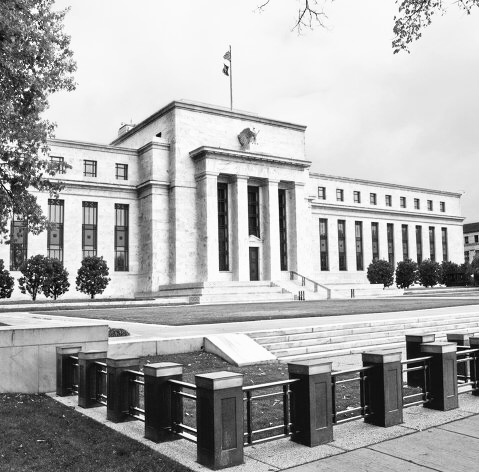FED or in other words Federal Reserve System, is the association that works as the Central/Bank in US. The past of the FED started in 1913, as soon as the Federal Reserve Act was adopted. The predecessors of the FED were successively several commercial banks, which failed to create an efficient centralized financial system of the country. The creation of the Federal Act was the result of countering a series of interbank crises in 1873, in year 1893 and even in 1907.
The FED contains of 12 federal reserve banks which placed in the biggest cities, about three thousand commercial so-called member banks, Advisory Boards, a President-appointed Board of Governors and Federal Open Market Group. The Federal Reserve Act is its main document.
The government products a decisive role in the organization of the FED, though the form of ownership of capital is private joint stock with a special status of shares.
Now, the FED takes in next main structural structures: Board of Governors, containing of seven people, appointed by the President of the US and agreed by Congress for a period of fourteen years; 12 Federal/Reserve/Banks, The Federal OpenMarketsCommittee, the Federal Advisory Council, which are local representatives of the FED, and other credit institutions are affiliates of the system.
In terms of governance, the FED is an sovereign structure within the US government. The FED takes powers from the US Congress. Its independence is confirmed by the fact that results on monetary policy are not subject to the approval of the US President or anyone else in the executive or legislative branches of government. The FED does not take funding from Congress. The period of office of the members of the Board of Governors of the FED spans multiple terms of presidency and members of Congress. At the same time, the FED is regulated by the Congress, which often analyzes the activities of the FED and can change the duties of the FED legislatively.
The current roles of the FED: fulfillment of the duties of the central bank of the US; consumer credit safety; keeping a balance between the interests of private banks and national interests; providing supervision and ruling of banking institutions; contributing to the effective achievement of employment maximization aims; participation in the working of the system of international and domestic payments; keeping price constancy and confirming moderate long-term interest rates; guaranteeing the stability of the monetary system, control of systemic hazards in financial markets; maintains for the growth of monetary aggregates corresponding in the long term to the economic potential of increasing production; providing financial services to depositories, including the US government and official international institutions; elimination of liquidity problems at the local level.
The peculiarity of the FED (in contrast to the traditional Central-Banks of other countries, for instance the Bank of England or the Central Bank of the Russian Federation) is that it is built not on state, but on private capital. Any credit organization that meets the obligations of the FED can purchase its shares.
FED’s legal status Control over the activities of the FED is carried out by the House of Representatives of the US Congress, to which it must report annually, and the Banking Committee of the Congress (report twice a year). The FED is audited once a year. Besides, from the point of view of the law, the US President can dismiss any governor of the Fed, but this rule has never been applied to date.
The FED is made up of the Regional/Federal/Reserve/Banks, which have independent legal personality but are ruled by the Federal/Reserve Board of Governors appointed by the US President.
In 1982, the Central District Court of California ruled John Lewis v. the US, which governed that the Federal/Reserve/Banks that are part of the Federal/Reserve/System are not institutions against which individuals can be sued under the law on claims against government organizations and employees (Federal Law on Initiation of Tort Claims).
This court ruling refers to the practice of applying the Federal Law on the initiation of tort claims against the Federal Reserve Banks and does not make any definitions concerning the status of the Federal/Reserve/System as a whole.
The FED does not use clearly defined intermediate targets to guide its monetary policy; it has abandoned the policy of strict monitoring of monetary aggregates. It practices a policy of fine tuning, adjusting its rates more frequently than its counterparts, which makes it more responsive.
11.02.2021

